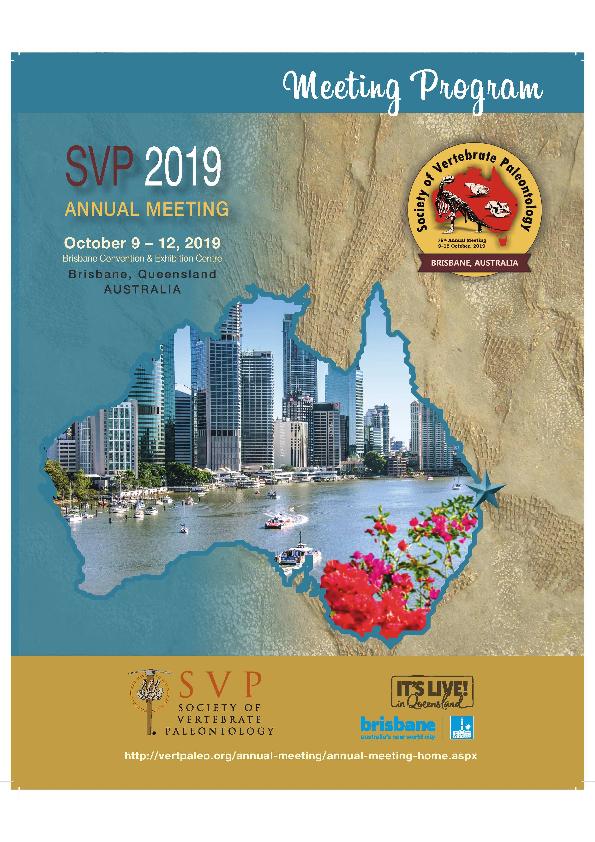Evento
Evolutionary trends of Protypotherium lineage throughout the Miocene-Pliocene of South America
Tipo del evento:
Reunión
Nombre del evento:
79th Annual Meeting
Fecha del evento:
09/10/2019
Institución Organizadora:
Society of Vertebrate Paleontology;
Título del Libro:
79th Annual Meeting: Asbtracts of papers
Editorial:
Society of Vertebrate Paleontology
Idioma:
Inglés
Clasificación temática:
Resumen
Protypotherium (lnteratheriinae, Notoungulata, Mammalia) is a well-known and very diverse genus of extinct native ungulates of South America, widely distributed from southern to middle latitudes of Argentina, Chile, and Bolivia. This genus exhibits distinctive species throughout the different biozones from the Miocene t0 Pliocene that display an interesting size pattern. Three species from the late Early Miocene, P. attenuatum (small), P. pmemtilum (medium), and P. australe (large); two species from the Middle to early Late Miocene, P. endiadys (small) and P. colloncurensis (large); two species from the Late Miocene, P. minutum (small) and P. distinctum (large); and only one species from Late Miocene-Plioeene, P. antiquum (large). The large sample of specimens studied during several years Of research allow to us to analyze the shape and size of upper and lower molars for all the species of Prolypotherium, in order to test the hypothesis of reduction of size ranges preserving a general tooth morphology as a response to climate deterioration. Elliptic Fourier analyses (EFA) were used to capture the shape of the occlusal morphology and the centroid size (CS) was also retained for subsequent analyses. Our results demonstrate that: 1) in general, a similar morphological tooth pattern is Observed among all species from Miocene t0 Pliocene; 2) there is a tendency to increase the size from the smallest species of the late Early Miocene (e.g., P. australe) t0 the largest one in the Late Miocene-Pliocene (P. antiquum); 3) tooth shape variation is not associated With a change in size (CS), both in upper and lower molars and between small and large species; 4) a decrease in the number of species is recorded from three in the early Miocene to one in the Late Miocene-Pliocene. This striking pattern could be correlated With a global trend to lower temperatures, Which indicates a deterioration of paleoenvironmental conditions. In South America, a markedly descend of temperature occurred during Miocene times that is also testified by paleo?ora and the marine environmental. Given this paleoenvironmental context, a successful conservative tooth pattern, together With an increase of size and a reduction in number of species were the main evolutionary and ecological tendencies accounted in Protypotherium from the Miocene to Pliocene.
Palabras clave:
NOTOUNGULATES
,
ANÁLISIS DE FOURIER
,
MASA CORPORAL
,
DENTINCIÓN
Archivos asociados
Licencia
Identificadores
Colecciones
Eventos(SEDE CENTRAL)
Eventos de SEDE CENTRAL
Eventos de SEDE CENTRAL
Citación
Evolutionary trends of Protypotherium lineage throughout the Miocene-Pliocene of South America; 79th Annual Meeting; Brisbane; Australia; 2019; 211-212
Compartir




